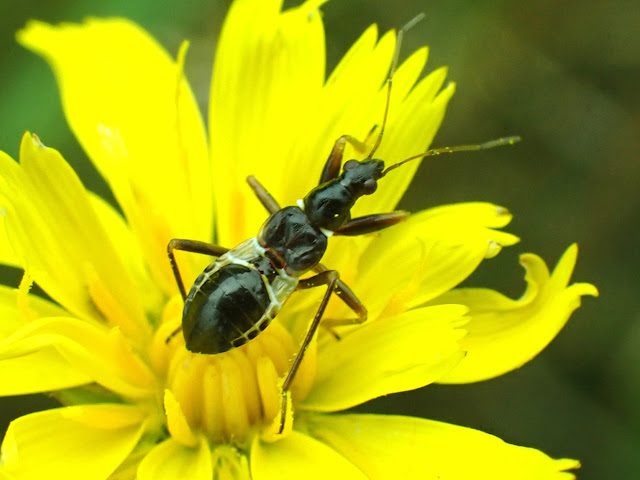A three hour seawatch from 05:20 saw southward passage of 24 Mediterranean Gull (14 ad, six fs, three 2s & a 3s) along with single departing Grey Heron and Whimbrel. Also out to sea and presumably lingering in the bay, three Pomarine (two dark phase) and a pale phase Arctic Skua, 13 Common Scoter, four Common and three Sandwich Tern, two Balearic and two Manx Shearwater, with the immature male Eider also still present.
On a low high tide a Little Ringed Plover in the Bight was the only small wader on todays WeBS, with counts from the estuary including 226 Curlew, 205 Oystercatcher, 47 Redshank, six Whimbrel, six Turnstone, five Greenshank, three Grey Plover, three Teal, the Dark-bellied Brent Goose and single Bar and Black-tailed Godwit.
Wildlife News: A pod of Common Dolphin remain offshore with at least six seen this morning. The warm temperature meant there was plenty of insect activity between the showers. Eleven species of butterfly were on the wing including a Comma, very scarce this year, and a Ringlet, both along the Back Path.
Hoverfly numbers were again boosted by migrants, with Common Twist-tail Sphaerophoria scripta easily the most abundant, especially around aphid-rich Sycamores.
Common Twist-tail - Kevin Rylands
Bee-wolf and Silvery Leafcutter remain numerous with smaller numbers of Yellow-legged Mining Bee, Little Flower Bee and Bare-saddled Colletes and the year's first Black-thigh Epeolus E. variegatus all on the wing.
Silvery Leafcutter - Kevin Rylands
Liocoris tripustulatus a nettle bug - Kevin Rylands
The recent rain has also brought an emergence of new flowers, essential as much of the Bramble has already finished. As well as the expected Common Fleabane and Hemp-Agrimony, Blue Eryngo Eryngium planum and Musk Thistle are also now out, the latter the first for several years.
Blue Eryngo - Kevin Rylands
Musk Thistle - Kevin Rylands















%20250723.jpg)





%20220723.jpg)



























